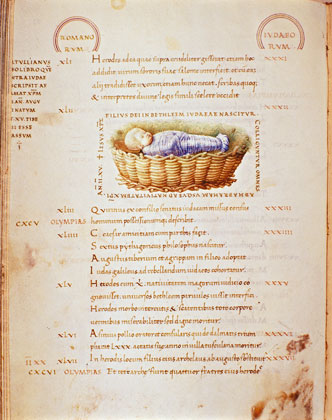Padua, an artistic crossroad
Between 1440 and 1460, Padua was one of the most brilliant artistic centers in Italy. This town, with its long university tradition, became a centre of experiment where, in a permanent coming and going, artists of all origins proposed resolutely innovatory figurative solutions: many were attracted by the presence of Donatello, the brilliant Florentine sculptor, who was in Padua, from 1443 to 1454, working on Gattamelata’s equestrian statue and the bronze altar of the Basilica of Sant’Antonio.
Mantegna took an active part in this fever of renewal. In 1445, just an adolescent, he is already quoted as a painter and had already frequented for a few years the workshop of Francesco Squarcione, himself a painter and sculptor, who had already attracted numerous disciples—including Nicolò Pizzolo, Marco Zoppo and Giorgio Schiavone—all of whom had come to study antique objects and become acquainted with the most recent Tuscan inventions.
The ascendancy of sculptural models over painting is very strong in Padua as can be seen in Mantegna’s Saint Mark whose half-figure framing derives from Donatellian compositions in terracotta or bronze, and Saint Euphemia, placed like a statue in a niche, but ready, in turn, to be easily reproduced in sculpture.
Around the Ovetari Chapel
In 1448, aged only seventeen, Mantegna chose independence and left Squarcione’s workshop whose pupil and adopted son he had become around 1440.
Straight away he was entrusted, together with other artists, with the realization of the frescoes of the Ovetari Chapel, in the church of the Eremitani in Padua: an important project which he carried out in association with his colleague Nicolò Pizzolo, a little older than him. But the latter—responsible for the morose Fathers of the Church in the medallions, which seem to have inspired Mantegna in his Saint Mark, was to die assassinated in 1453, leaving all the glory of the enterprise to his young associate.
The Ovetari Chapel, with its inscriptions and its antique marbles, its majestic architectures peopled with figures, as cold and distant as statues, its garlands heavy with fruit and malicious cherubs, immediately became a point of reference for Quattrocento artists.
Quickly praised by poets and men of letters who wanted to have their portraits painted by him, Mantegna immediately became a famous painter, sought after by important patrons.
Andrea Mantegna (Isola di Carturo, circa 1431 - Mantua, 1506)
Christ Child in the Manger
1450
Distemper on vellum; H. 27.3 cm; W. 28.3 cm
Venice, Biblioteca Nazionale Marciana, ms. Lat. IX, 1 (3496), c. 133v.
© Ministero per i Beni e le Attività Culturali, Biblioteca Nazionale Marciana, Venezia









